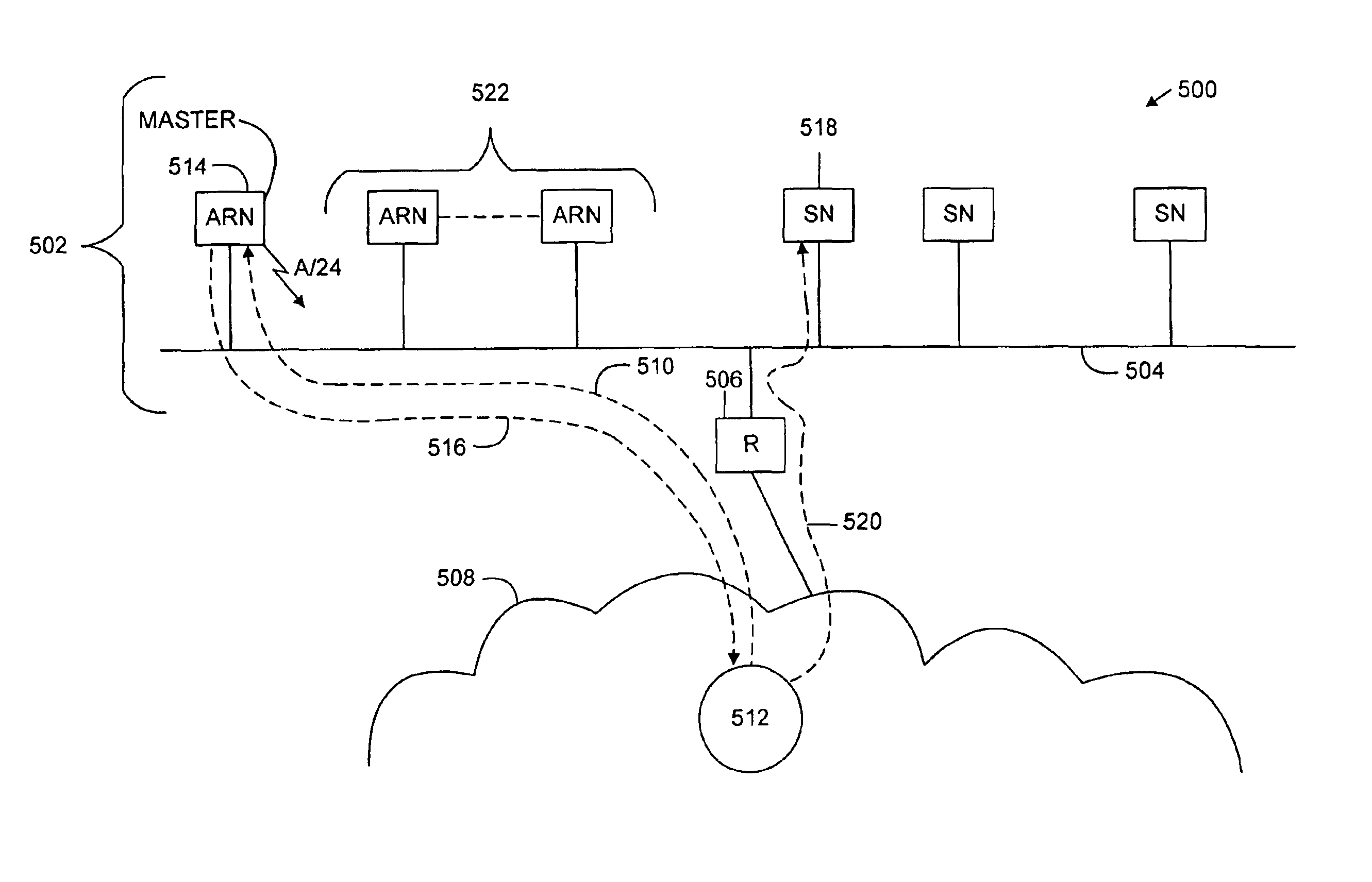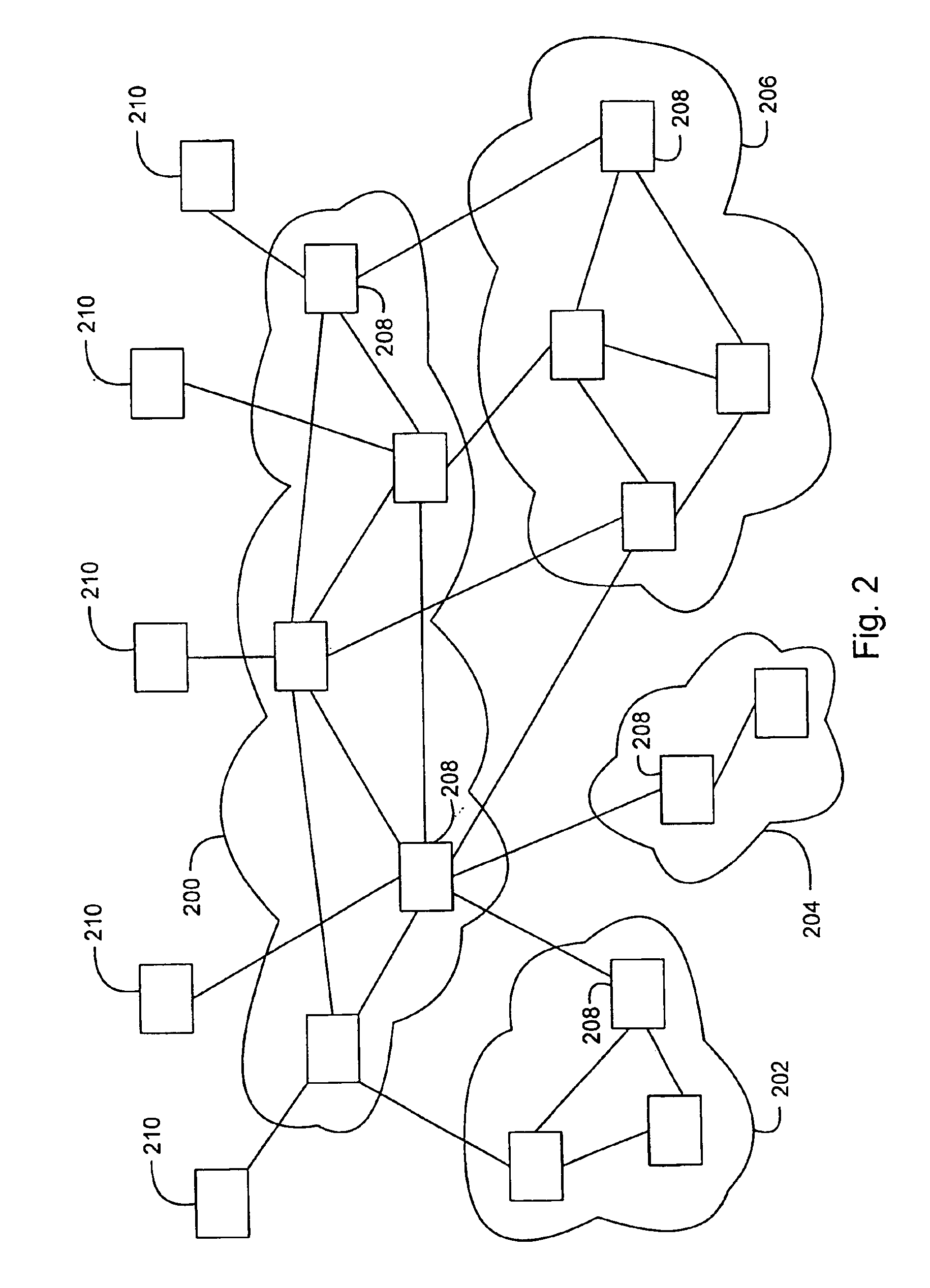Proximity-based redirection system for robust and scalable service-node location in an internetwork
a service-node location and proxy-based redirection technology, applied in the field of data network information distribution, can solve the problems of wasting network bandwidth, not providing a cohesive network architecture, incompatible with certain modes of the underlying, etc., and achieve the effect of improving the packet-switched network
- Summary
- Abstract
- Description
- Claims
- Application Information
AI Technical Summary
Benefits of technology
Problems solved by technology
Method used
Image
Examples
Embodiment Construction
[0024]The comprehensive redirection system of the present invention operates in tandem with service nodes situated at strategic locations throughout the network infrastructure that are coordinated across a wide area into a cohesive, coordinated, and managed virtual overlay network. The overlay network architecture is based on a design philosophy similar to that of the underlying Internet architecture, e.g., it exploits scalable addressing, adaptive routing, hierarchical naming, decentralized administration, and so forth. Because of this, the overlay architecture enjoys the same high degree of robustness, scalability, and manageability evident in the Internet itself. Unlike a physical internetwork, where routers are directly attached to each other over physical links, service nodes in the virtual overlay network communicate with each other using the packet service provided by the underlying IP network. As such, the virtual overlay is highly scalable since large regions of a network (...
PUM
 Login to view more
Login to view more Abstract
Description
Claims
Application Information
 Login to view more
Login to view more - R&D Engineer
- R&D Manager
- IP Professional
- Industry Leading Data Capabilities
- Powerful AI technology
- Patent DNA Extraction
Browse by: Latest US Patents, China's latest patents, Technical Efficacy Thesaurus, Application Domain, Technology Topic.
© 2024 PatSnap. All rights reserved.Legal|Privacy policy|Modern Slavery Act Transparency Statement|Sitemap



